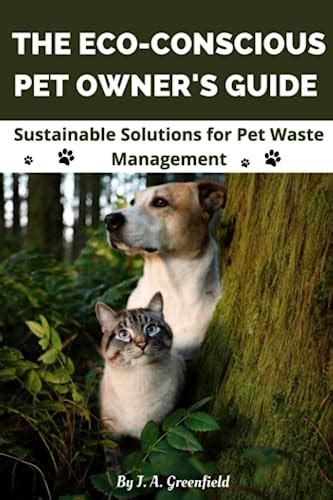Environmentally Responsible Pet Parenting: A Guide to Sustainable Pet Ownership
As pet owners, we have a responsibility to care for our furry friends while also being mindful of our environmental impact. By embracing environmentally responsible pet parenting practices, we can reduce our carbon footprint and create a more sustainable future for both pets and the planet.

Why Embrace Eco-Friendly Pet Parenting?
- Reduce carbon emissions: Pet food production, transportation, and waste disposal contribute to greenhouse gas emissions.
- Protect wildlife: Unsustainable pet practices can harm wildlife habitats and biodiversity.
- Conserve resources: Eco-friendly pet care practices conserve water, energy, and other natural resources.
- Enhance pet health: Sustainable practices can improve pet health by reducing exposure to toxins and promoting a natural lifestyle.
7 Green Habits for Responsible Pet Owners
1. Choose Sustainable Pet Food
- Opt for pet food made from sustainably sourced ingredients, such as organic or locally grown produce.
- Consider plant-based diets or pet food with a lower meat content to reduce environmental impact.
- Buy pet food in bulk to minimize packaging waste.
2. Compost Pet Waste
- Instead of landfilling pet waste, compost it to create a nutrient-rich soil amendment.
- Use biodegradable poop bags or consider innovative solutions like pet waste digesters.
- Join community composting programs to reduce individual waste disposal efforts.
3. Recycle Pet Products
- Recycle plastic pet food containers, toys, and packaging whenever possible.
- Donate old pet supplies to local shelters or animal rescue organizations.
- Look for eco-friendly alternatives to pet products, such as reusable bowls and leashes made from recycled materials.
4. Reduce Water Usage
- Use water-efficient bowls and bathing practices to conserve water.
- Consider installing a rainwater collection system for pet baths and yard maintenance.
- Opt for waterless grooming products, such as dry shampoo or grooming wipes, to reduce water consumption.
5. Conserve Energy
- Use energy-efficient pet appliances, such as LED lights for pet habitats and smart thermostat controls for pet areas.
- Unplug pet appliances when not in use to save energy.
- Consider using renewable energy sources, such as solar panels, to power pet equipment.
6. Limit Pet Transportation
- Walk or cycle with your pet instead of driving whenever possible.
- Use public transportation or carpool for longer distances.
- Consider eco-friendly pet transportation options, such as electric pet carriers or pet-friendly buses.
7. Adopt or Rescue
- Adopt or rescue a pet from a local shelter instead of purchasing from a breeder.
- By giving a homeless animal a loving home, you reduce the demand for breeding and minimize the environmental impact of pet overpopulation.
Conclusion
By adopting these environmentally responsible pet parenting practices, we can make a positive impact on the planet and provide our furry companions with a healthy and sustainable life. Remember, small changes can make a big difference in creating a greener future for pets and the environment.





















